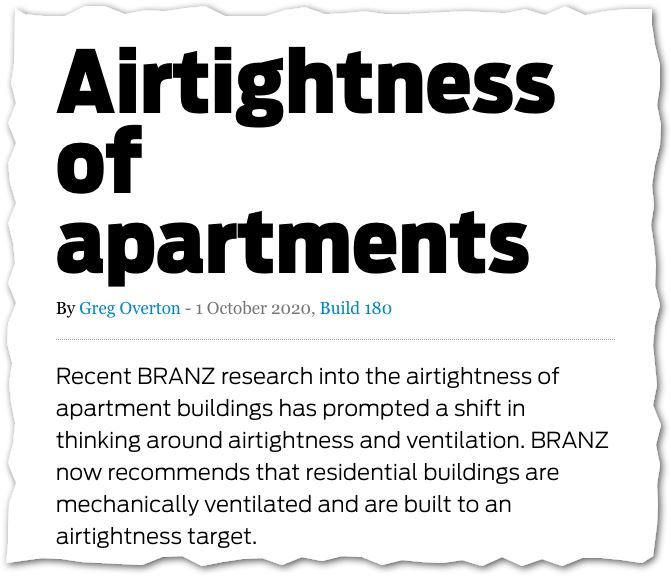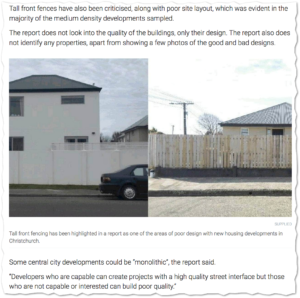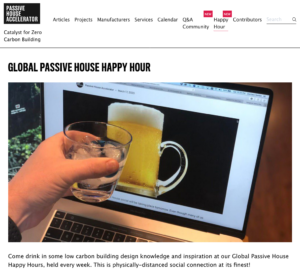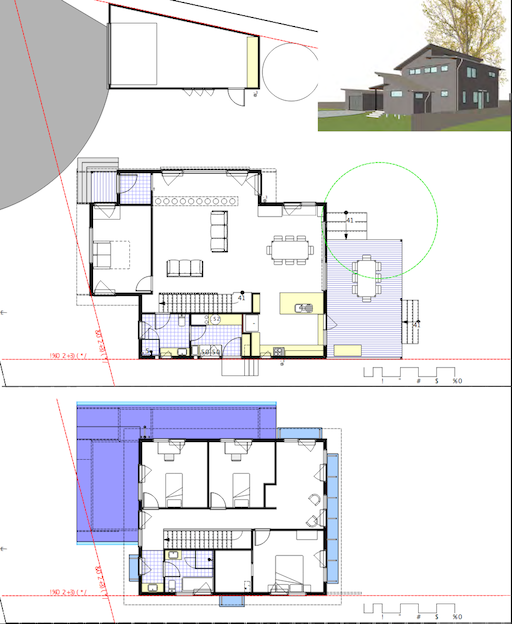Fire rating of the building/windows is not something we usually need to worry about in new, detached single-family homes, as the clearance to the property boundaries is sufficient. But during retrofits—especially ones that involve a change of use—fire regulations can have a big impact. It’s best to avoid the need for fire-rated windows as they are big money and poor …
Interior condensation should be expelled from school
If Leaky Buildings 1.0 was about rain getting in where it shouldn’t, then Leaky Buildings 2.0 is all about the build-up of condensation, such that it feels like it’s raining inside. Building physics knows how to build schools that stay dry inside. But here we have another school with a roof that drips on the kids inside due to interior …
BRANZ sees the light on mechanical ventilation

Holy sh*t. Talk about a big shift in perspective. Let’s repeat that: “BRANZ now recommends that residential buildings are mechanically ventilated and are built to an airtightness target.” This comes from an article in the Oct 2020 edition of Build magazine, available online. In it, Senior Building Performance Engineer Greg Overton says “the measurements [from their latest research] sit alongside …
Focus on performance not just appearance in the Christchurch rebuild

Christchurch City Council’s urban design team has turned in a report that looked at 46 housing developments built since new rules were introduced in 2016 to allow for greater housing density in that city. I had a complicated reaction when I read Christchurch mayor Lianne Dalziel’s quote, “…nothing is going to excite me about a blank wall or a high …
Passive House happy hour: Fast, factual, fun

Don’t already know about this? You’ve got some fun and learning to catch up on. This weekly gig is in its sixth month now, bringing Passive House experts together from around the globe. Most of the presentations are fairly technical and get into the details us Passive House geeks love. The live calls happen at 11 am each Thursday, which …
Affordable housing that works

Todd Rothstein’s recent Global Passive House Happy Hour presentation* focused on the economics of Passive House construction rather than the more usual technical details. Todd’s goal is to build affordable housing for folks living in Maine in the United States. (Maine is the north-east corner of the United States, enjoying temperatures of -25C in the winter and 35C in the …
Cheaper. Better. Just do it.

Sydney’s first PH built for less than an equivalent Code house A fantastic report on the cost premium for building a Passive House has been released by Sydney architect Andy Marlow. This is an important piece of research and I urge you to download and read it. Every Passive House professional hears the question, “But how much more will it …
Heat pumps a great choice for high-performance homes

Heat pumps are suitable for every climate zone in New Zealand, even the coldest, and they are the most efficient source of heating and cooling. Don’t buy crappy ones. New labelling makes it easier to compare models. We always recommend heat pumps in our building designs or other projects we consult on. For single family homes, it’s usually just one …
RNZ Explores Barriers to Passive House
RNZ presenter Kathryn Ryan asked some very good questions in a recent interview about whether all new social housing in New Zealand should be built to the Passive House standard. Here are some clear answers. Q. What is involved in getting Passive House certification? A building gets certified as a Passive House if it meets specific performance targets. It can …
